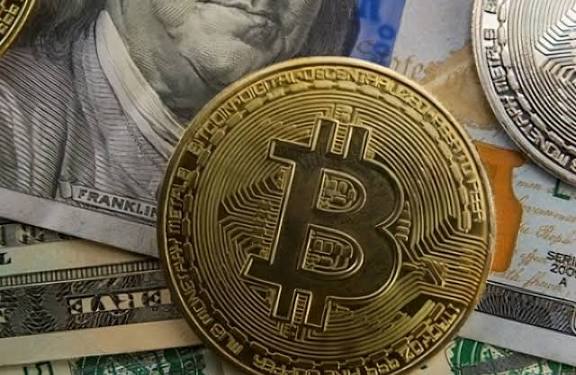
As 2025 goes on, the global markets are behaving in surprising and opposite ways from what investors usually expect. Gold has surged past $4,000 per ounce for the first time ever, delivering a staggering 53% gain year-to-date. Meanwhile, Bitcoin long dubbed “digital gold” is up roughly 29% but has noticeably lagged behind traditional safe havens and major stock indices hitting record highs.
This divergence has sparked one of the year’s most debated macro narratives: Has Bitcoin lost its edge as a hedge, or is this merely a temporary cycle within a broader structural shift?
1. Bitcoin’s Consolidation Amid a Broader Rally
After recently reaching a new all-time high above $125,000, Bitcoin has struggled to maintain momentum. As of early October 2025, BTC trades around the $121,000 level, roughly 3.8% off its peak.
By contrast, gold has outperformed every major asset class, up over 50% since January, while silver has crossed $51 per ounce, echoing a wave of defensive positioning by global investors. The Nasdaq 100 and S&P 500 have also recorded new highs, yet Bitcoin remains caught in a sideways consolidation phase.
Market data from CryptoQuant and CoinGlass show a notable reduction in spot trading volumes and derivatives open interest, suggesting that institutional capital is rotating toward lower-volatility assets as macro uncertainty rises.
2. The Macro Backdrop: Why Gold Is Shining Again
Gold’s breakout in 2025 isn’t just random, it’s a direct reflection of macro conditions. With the U.S. Federal Reserve maintaining a cautious stance on rate cuts and global bond yields trending lower, investors have turned to precious metals as a traditional hedge against monetary instability.
Central banks worldwide have continued record-breaking gold purchases. According to the World Gold Council, central bank demand has exceeded 400 tonnes for three consecutive quarters, its strongest run since the early 1970s.
Meanwhile, the dollar index has shown relative weakness, amplifying demand for non-dollar assets. Inflation expectations, though moderating, remain sticky, and geopolitical risks from supply chain tensions to commodity shocks have revived gold’s historical role as a store of value during economic transitions.
Bitcoin, while often discussed in the same breath, hasn’t fully benefited from this narrative in the short term.
3. Bitcoin’s Role Under Scrutiny
Bitcoin’s performance relative to gold underscores a persistent identity question: Is BTC truly a safe haven, or is it still treated as a high-beta risk asset?
Throughout 2025, Bitcoin’s price movements have remained correlated with U.S. tech equities, reflecting how institutional investors still classify it as part of the risk-on category. Whenever macro uncertainty increases or liquidity tightens, Bitcoin tends to retrace, even as gold rallies.
This correlation shift suggests Bitcoin’s macro role is still evolving. Despite widespread adoption, the asset’s short-term behavior is dictated more by market liquidity and speculative sentiment than by defensive capital flows.
Yet, it’s not all negative this same volatility has historically preceded major breakout cycles once macro pressure eases.
4. ETF Flows, Rates, and the Risk Environment
One of the key macro themes shaping Bitcoin’s underperformance is ETF flow divergence.
Spot Bitcoin ETFs launched in early 2024 attracted massive inflows initially, but 2025 has seen a slowdown. According to Bloomberg Intelligence, ETF net inflows have dropped by 34% quarter-over-quarter as investors rebalance toward traditional assets.
Conversely, gold ETFs have reported record inflows, with funds like SPDR Gold Shares (GLD) seeing their largest AUM growth in over a decade. This reflects an ongoing risk recalibration driven by rates and policy uncertainty.
Even though interest rates are expected to decline later in the year, real yields remain positive, reducing the short-term incentive to hold non-yielding assets like Bitcoin. This has created a temporary headwind for BTC’s macro narrative as a hedge against inflation and monetary debasement.
5. The Long-Term Perspective: Digital Gold Still Holds
Despite this year’s divergence, Bitcoin’s long-term thesis remains intact. Over the past five years, BTC has still outperformed gold, equities, and most commodities on a cumulative basis.
Bitcoin’s fixed supply, global accessibility, and programmable settlement features continue to differentiate it as a digital monetary asset—but its price behavior highlights that it hasn’t yet replaced gold’s stability as a macro hedge.
Market participants expect Bitcoin to regain strength once macro liquidity expands again. The next Federal Reserve rate adjustment or a sustained equity correction could redirect capital back into Bitcoin, especially as risk/reward dynamics shift.
6. What This Means for Investors
For traders and investors, the message from this divergence is clear: macro context matters.
Bitcoin’s underperformance doesn’t invalidate its narrative, it highlights timing and positioning challenges in a complex macro cycle. Gold thrives under policy uncertainty and real-rate compression, while Bitcoin often benefits most in liquidity-driven environments.
Seasoned investors view the current divergence as an opportunity to rebalance portfolio—allocating between traditional and digital hedges. Watching key indicators such as ETF flows, bond yields, and inflation expectations provides insight into when Bitcoin’s next momentum phase could begin.
As macro narratives evolve, BTC’s ability to decouple from equities and regain its “digital gold” status will define its next major price cycle.
7. Conclusion: Narrative Resilience in Transition
Bitcoin’s relative lag in 2025 isn’t just a sign of weakness, it’s a reflection of maturity. As traditional assets dominate headlines, Bitcoin’s role is shifting from speculative trade to structural macro instruments.
The current macro divergence underscores how digital gold must now coexist with its physical counterpart in diversified portfolios. Bitcoin continues to prove its relevance, but investors are learning to treat it as a strategic long-term asset rather than a short-term inflation hedge.
Gold may lead this cycle, but Bitcoin’s innovation, programmability, and decentralized design keep it central to the evolving financial narrative.
Disclaimer: This content is for educational and reference purposes only and does not constitute investment advice. Digital asset investments carry high risk. Please evaluate carefully and assume full responsibility for your own decisions.
Join MEXC and Get up to $10,000 Bonus!



